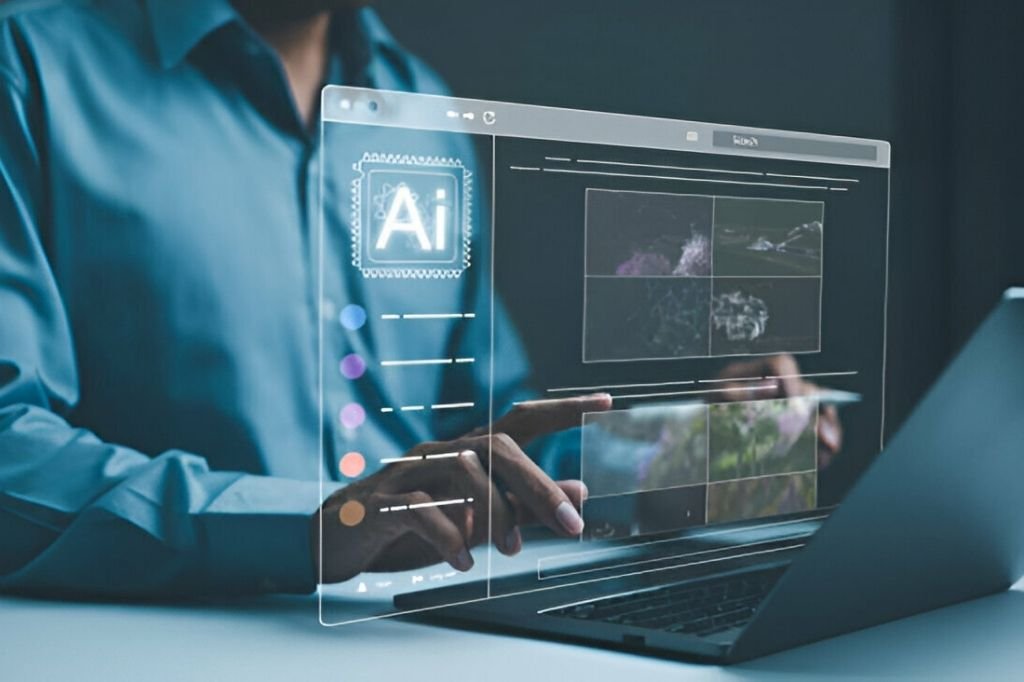In the mesmerizing realm of artificial intelligence, one of the most visually compelling advancements is the AI image generator. These sophisticated systems have the power to transform textual descriptions into stunning visuals, blurring the lines between human and machine-created art. In this deep dive, we will explore the intricate processes behind how AI image generators work, illuminating their mechanisms and impacts on the creative industry.
The Basics of AI Image Generation
At the heart of AI image generation is a type of neural network known as a Generative Adversarial Network (GAN). GANs consist of two main parts: the generator and the discriminator. The generator’s role is to create images that look as realistic as possible. It starts with a random noise input and transforms this input into images through layers of neural networks.
The discriminator, on the other hand, has the task of distinguishing between images produced by the generator and real images from a training dataset. It critiques the generator’s outputs, which helps the generator improve over time. Through this continuous contest, the generator learns to produce more accurate and realistic images, effectively ‘deceiving’ the discriminator into believing the images are real.
This dynamic rivalry drives the GAN to enhance its capability continually, leading to the production of highly realistic images that can often be indistinguishable from actual photographs. The key to this process is the extensive training data that feed these networks, allowing them to learn a wide variety of styles and contents.
Training Data and Algorithms
The effectiveness of an AI image generator heavily depends on the quality and quantity of its training data. These models are typically trained on datasets containing millions of images. The variety in these datasets enables the AI to learn different artistic styles, object forms, and scene compositions.
The training process involves adjusting the neural network’s parameters until the generator produces images that can fool the discriminator consistently. This training phase is computationally intensive and can take days or even weeks, depending on the complexity of the data and the desired resolution of the output images.
Algorithms also play a crucial role in optimizing how these neural networks operate. Techniques such as transfer learning, where a model developed for one task is reused as the starting point for another task, can significantly expedite the training process. Moreover, newer algorithms focus on increasing efficiency, reducing the amount of computational power needed, and improving the fidelity of the generated images.
Applications in Creative Industries
AI image generators are not just technical marvels; they are also reshaping the creative landscape. In graphic design, advertising, and even film production, these tools provide artists and designers with new ways to express their creativity. They can generate unique concepts, provide inspiration for projects, or even create final pieces of art.
One significant application is in the realm of digital marketing, where customized and eye-catching graphics can be generated on demand, aligning perfectly with brand messages and campaign themes. Furthermore, in film production, AI-generated images can help visualize sets and costumes before physical production begins, saving time and resources.
However, the use of AI in creative processes also raises ethical questions about originality and the role of human artists in the future. As these tools become more prevalent, it is crucial to consider how they are integrated into creative workflows, ensuring they augment rather than replace human creativity.
Challenges and Ethical Considerations
While AI image generators hold tremendous potential, they also present significant challenges. The reliance on vast datasets can lead to biases in generated images, reflecting any inherent biases in the training data. This can perpetuate stereotypes or propagate misleading representations if not carefully managed.
Another ethical concern is the use of AI in creating deepfakes—highly realistic and potentially deceptive images and videos. As technology advances, the ability to generate fake images that seem real can have serious implications for misinformation, privacy, and security.
Thus, it’s essential to develop robust frameworks and guidelines to govern the use of AI image generators, ensuring they are used responsibly and ethically. This involves not only technological solutions but also legal and societal norms that foster transparency and accountability.
In conclusion, understanding how AI image generators work offers a fascinating glimpse into the capabilities of modern artificial intelligence technologies. These tools are transforming artistic creation, providing both opportunities and challenges that need careful consideration. As we stand on the brink of this AI-driven artistic frontier, it is our responsibility to guide its integration into society thoughtfully and ethically, ensuring it enhances rather than diminishes human creativity.
